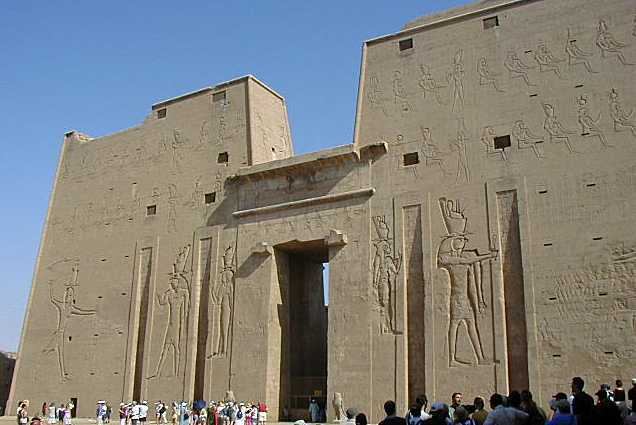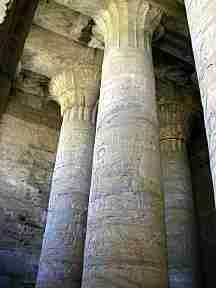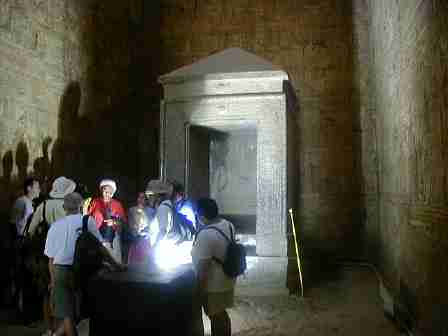
Inscriptions on the temple of Edfu date it precisely: the seventh day of the month of Epiphi in the tenth regnal year of Ptolemy III Evergetes (23 August 237 BCE). And -- believe it or not -- other inscriptions indicate when it was finished: 5 December 57 BCE. That's 180 years, not bad considering how long it took to finish some of the great gothic cathedrals in Europe.
Edfu is considered to be the best preserved temple in Egypt, a fact that may be explained by its relatively recent construction coupled with its having been buried in sand for most of its existence: it was only uncovered in the second half of the nineteenth century.
Look closely at the photograph below. There is Horus with his falcon head on either side of the entrance and two smaller images of Hathor, all of them wearing the double crown of Upper and Lower Egypt. To the extreme left is the pharoah doing his thing to the emenies of the state, an icon we have seen many times before on other, much earlier, temples.

| This temple is dedicated to Horus, the son of Isis and Osiris and with whom every living pharoah was identified. Horus is most often seen as a falcon-headed human, but here -- in black granite on either side of the entrance of the massive pylon -- is Horus as a falcon pure and simple, the pharoah standing beneath his breast. Behind, carved into the pylon, we see the more usual Horus figure accompanied by his wife, Hathor. |  |
 | On the other side of the entrance pylon is a large court at back of which is a hypostyle hall. Standing beside its doorway is a magnificent black granite Hosus wearing the Egyptian double crown. (Unfortunately, when I--a tourist myself, of course--was there, this statue was surrounded by other tourists whose photo I was required to take along with that of Horus. I deleted them at the expense of a much reduced Horus. Pity.) |
 | Unlike, for instance, the hypostyle hall at Karnak, the ones at Edfu retain the original roof. |
 |